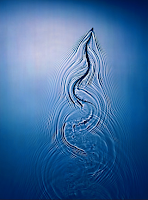Camera-Less / Photograms - Man Ray
Man Ray
He was born on the 27 August 1890 in Philadelphia, Pennsylvania, United States. He was born with a different name, his birth name was Emmanuel Radnitzky he later shortened it to Man Ray. He was an American visual artist. He spent most of his life and career in France. He is noted forhis work with photograms which he called "rayographs" in reference to himself. His work styles influenced by Cubism, Futurism, Dada and Surrealism. He is mainly remembered for his photographs of the inter-war years, mainly the camera-less pictures which he called "Rayographs" but he regarded himself as a painter more than a photographer.
Man Ray's style capitalised on the stark and unexpected effects of negative imaging. He displayed artistic and mechanical abilities during childhood. While he was a child he would frequently the local art museum. When he went to the museums he would learn about the works of old masters.
His experiments with photography included rediscovering how to make 'camera-less' picture. Which Man Ray called rayographs. He wrote a autobiography, called self portrait which took him over a decade to to complete and it was finally published in 1965.
https://www.biography.com/people/man-ray-9452778
"It was his achievement to treat the camera as he treated the paint brush, as a mere instrument at the service of the mind." - Marcel Duchamp (Man Ray's friend)
Even in his final years he still continued to exhibit his art, with shows all over the world in the years before his death. He passed away on November 18, 1976 in Paris at the age of 86.
This is a photogram that Man Ray made.
He has used a piece of film, a pair of scissors, a glass, a pen and a set of tweezer type thing. Ray placed the objects around on the photographic paper.
This is another one of Man Ray's photogram.
He used a leaf with holes in it to get a different effect. He placed the leaf in the middle of the page, so the whole of the leaf was exposed to light.




Comments
Post a Comment